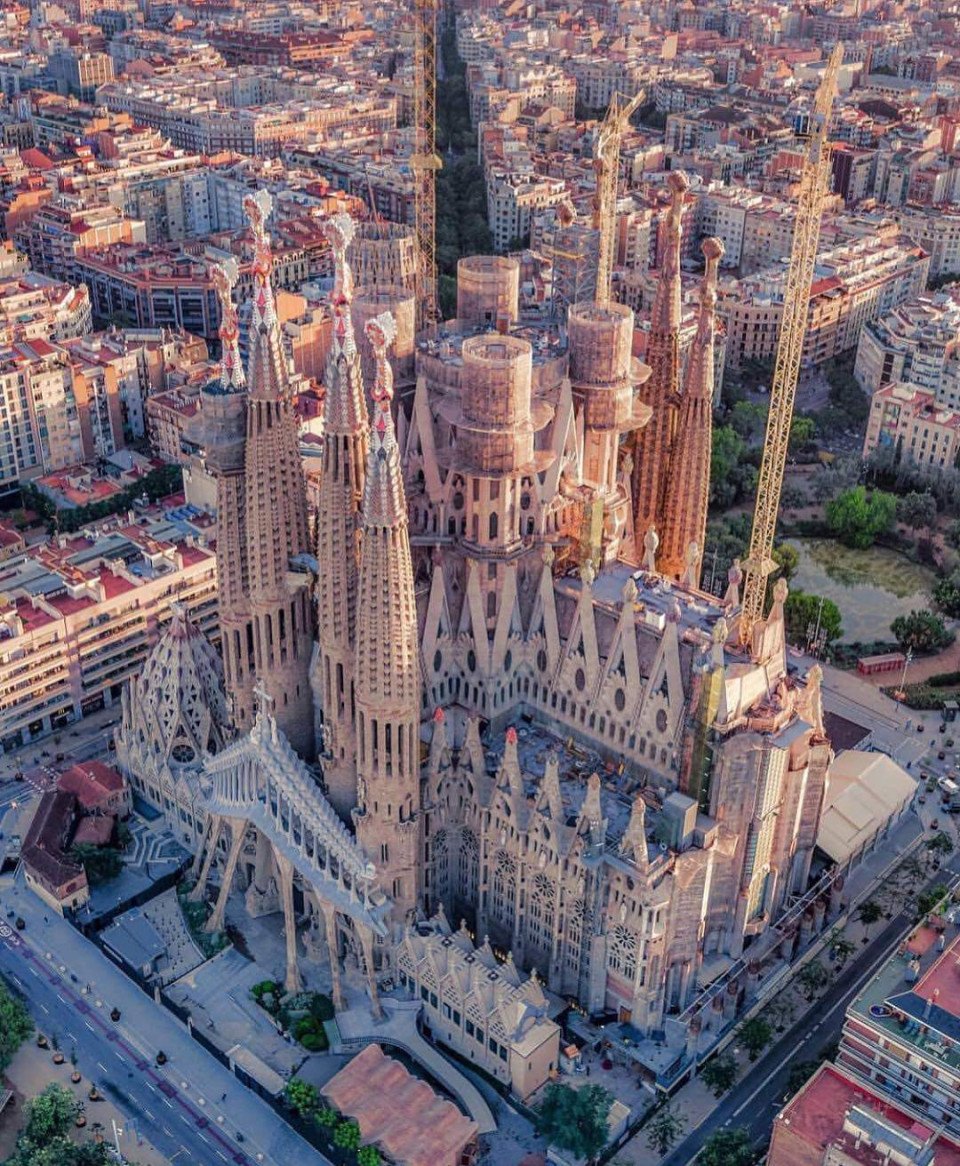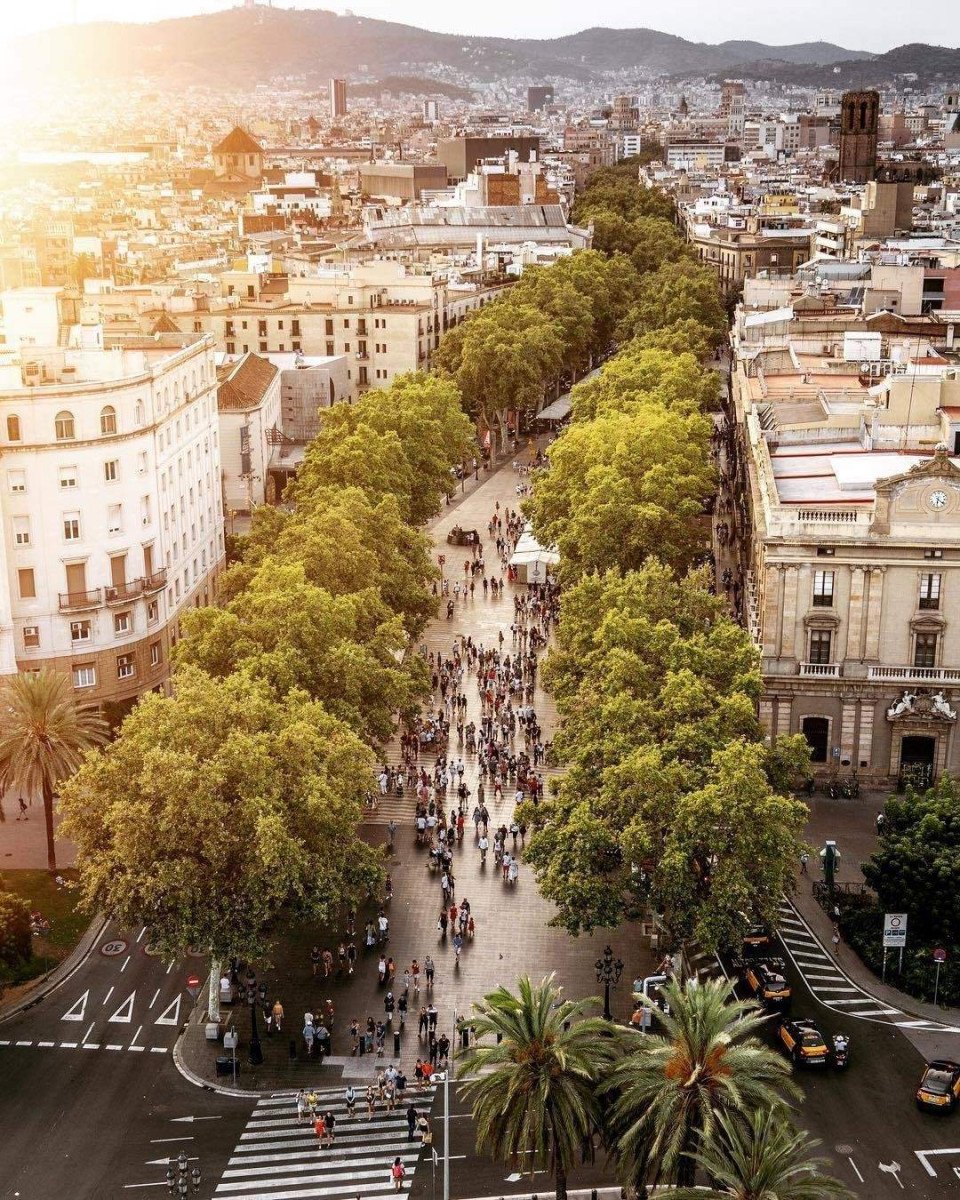Did you know that Barcelona is the most-visited city in Spain? With about 1.6 million inhabitants, the number of visitors to the city far outnumbers the people living in it. What do you know about the city? Along with its amazing architecture, perfect Mediterranean location, wonderful tapas and wine or cava, there are a few facts about Barcelona that you may now know. Read on to find out what they are.

1. Barcelona has 2 official languages
Although Barcelona is located in Spain, it is the capital of Catalonia. Spain is divided into 17 different autonomous regions (or comunidades autónomas) and Catalonia (Catalunya) is one of them. Spanish and Catalan (which is not a dialect, but a completely distinct language from Spanish) are the languages you will see on transportation signs, menus, in public places and museums all over the city. You can learn more about the different languages of Spain here.
2. Picasso has roots in Barcelona
Pablo Picasso, the famous Spanish artist responsible for introducing Cubism to the world, spent his formative years in Barcelona and studied at its School of Fine Arts. There is a Picasso museum in the Born neighbourhood of Barcelona which has over 4,000 of his works on display.
3. The famous Basilica of the Sagrada Familia has taken longer to complete than the Egyptian Pyramids
Speaking of architecture, construction of Catalan architect Antoni Gaudí’s magnum opus Sagrada Familia began in 1882. To this day, the basilica remains unfinished, but there has been a completion date set that coincides with the hundredth anniversary of its architect’s death (who is, surprisingly, buried inside!). Conversely, Egyptologists estimate that the Great Pyramids of Giza were constructed with ancient tools in the span of 10-20 years.

4. Barcelona is the only recipient of the Royal Gold Medal for architecture
In 1999, Barcelona became the only city to be awarded the prestigious Gold Medal for Architecture by the Royal Insitute of British Architects. The honour has been awarded to individual, or groups of, architects since 1848. This could be due to the great Art Nouveau movement that took place between 1880 to 1950 and can be seen when walking through the Eixample neighbourhood.
5. There are over 20 Michelin starred restaurants in Barcelona
Spain has started to become a popular destination for food tourism. Mild temperatures and almost 5000km of coastline make it impossible not to cook with fresh, quality ingredients and seafood. The Catalan capital boasts a number of top chefs including brothers Albert and Ferran Adrià, Joan Roca and Cristian Escribà.
6. Barcelona is home to 9 UNESCO World Heritage Sites
Of these nine important sites, seven were of Gaudí’s making. They are Parc Güell, Palau Güell, Casa Milà (aka La Pedrera), Casa Vicens (the first building he designed), La Sagrada Familia, Casa Batlló and the Cryst of the Church at Colonia Güell (which is located on the southern side of Barcelona’s Llobregat river. The other two UNESCO sites – the Palau de la Música Catalana and the Hospital de Sant Pau – were designed by architect Lluis Domenech i Montaner.

7. We have Barcelona to thank for World Book Day
On April 23rd, Catalans pay tribute to the patron saint of Catalonia – Saint George. On the day of la Diada de Sant Jordi, the tradition is for couples, lovers and friends to exchange books and roses. UNESCO liked the idea so much that they declared the day World Book and Copyright day in 1995.
8. Barcelona is home to the largest football stadium in Europe
FC Barcelona (colloquially known as Barça) being one of the most celebrated football clubs in the world, also plays in the biggest stadium in Europe. If you have not visited Camp Nou, the sheer size (it has a capacity for almost 100,000) is definitely something to witness. It holds a museum and you can even take a guided tour to see the stadium through the eyes of the players as well as fans. And if you can go to a match, even better!
9. The famous grid pattern of l’Eixample was not well-received at the time
The designs of architect Ildefons Cerdà, who was responsible for the Eixample (meaning expansion in Catalan) project which would extend the city beyond its medieval walls, were highly criticized at the time. Today, the octagonal blocks – which focused on facilitating the flow of traffic, allowing sunlight and ventilation to come between the buildings – and gridded pattern of the project are applauded for their ingenuity.
10. It’s said that Barcelona is even older than Rome
That’s right! Barcelona’s perfect location on the Mediterranean makes it an ideal place for settlers. Although the exact dates of the earliest settlements remain unclear, there are ruins that have been found dating earlier than 5000 BC. There are two different legends surrounding how Barcelona was founded. The first is that the mythological Hercules founded the city; the second is that Hamilcar Barca, a historic general, named the city Barcino after his family in 3rd century BC.
11. There are abandoned train stations in the city
If you count both metro and train stations, there are about 12 that are abandoned, or not in use. Why do they exist? These stations have been retired either because of new additions or changes made in the tracks. Some of these abandoned stations include Gaudí station, Correos, Banco, and Travessera in Gràcia.
12. La Rambla is actually 5 streets combined
The famous tree-lined pedestrian in Barcelona is also sometimes called Las Ramblas because it is made up of smaller sections. These are Rambla de Canaletes, Rambla dels Estudis, Rambla de Sant Josep (or de les Flors), Rambla dels Caputxins and Rambla de Santa Mònica.

13. It wasn’t always the sunny beach town as we know it today
If you talk to someone who grew up in Barcelona before the Olympic Games in 1992, they will tell you that Barcelona lived “with its back to the sea”. Barcelona’s history and location as a port city made it very industrial and many of the factories were located on the shore. Once Barcelona knew it would host the Olympics, the cleanup and beautification of the seaside became one of the most important projects. In fact, some of the beaches are artificial as sand was brought from abroad to create the popular beaches of today.
14. Barcelona was offered the Eiffel Tower before Paris
Rumour has it that Gustave Eiffel and his team made a bid for their design to be accepted in Barcelona for the World Exposition of Barcelona in 1888. Apparently, the city rejected the offer, fearful that the large tower would be an eyesore on the city’s skyline and residents would disapprove.
15. Barcelona is full of air raid shelters
Because of the Spanish Civil War that went on from 1936 to 1939, there were as many as 1400 bomb shelters built within the city of Barcelona and more in surrounding areas. Refugio 307 (Shelter 307) was one of the largest, with a capacity for almost 2000 people, and most elaborate of the shelters. Located at the foot of Montjuïc in the Poble Sec neighbourhood, the MUHBA (Museum of History of Barcelona) offers guided tours by appointment.
Posted in The best of Barcelona
Learn and improve your Spanish in Barcelona, one of the world's most vibrant and exciting cities.
Here at Speakeasy BCN you'll find courses for all abilities and timetables, an incredible team of talented and motivated teachers and classmates to share your interests and passions. And if you need a visa for your stay, then of course we're able to help and advise.

Start your learning Spanish in Barcelona adventure
Let us know if you have any questions about our courses, our school and life at Speakeasy.